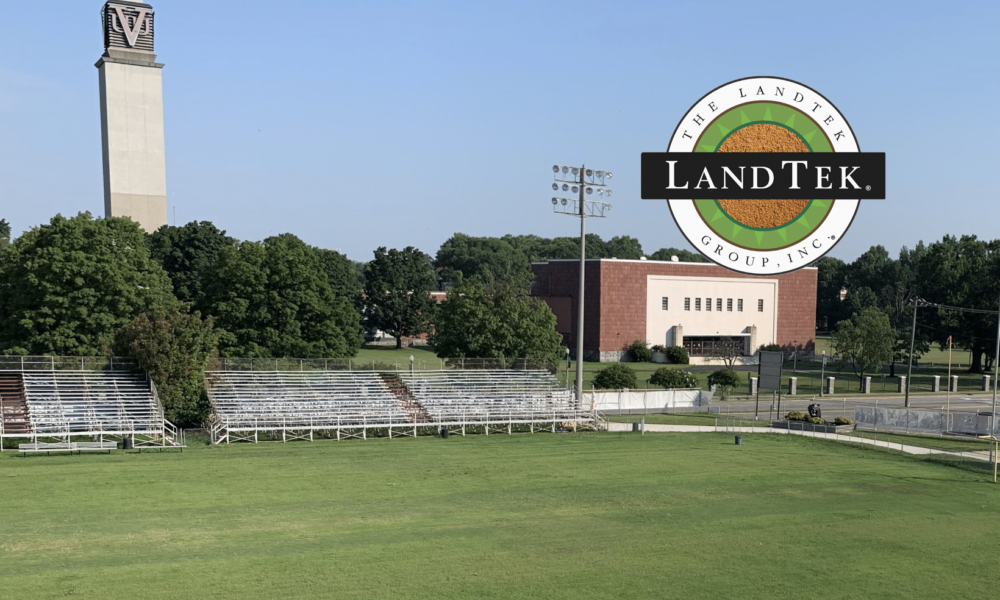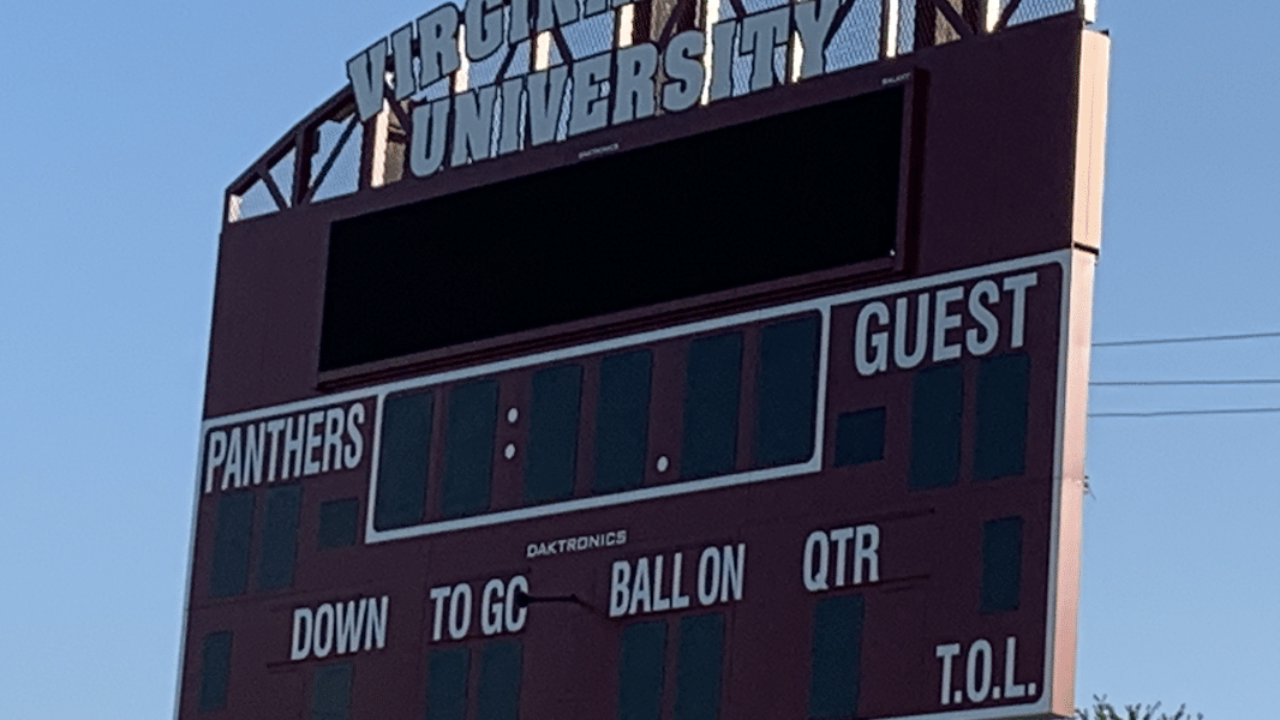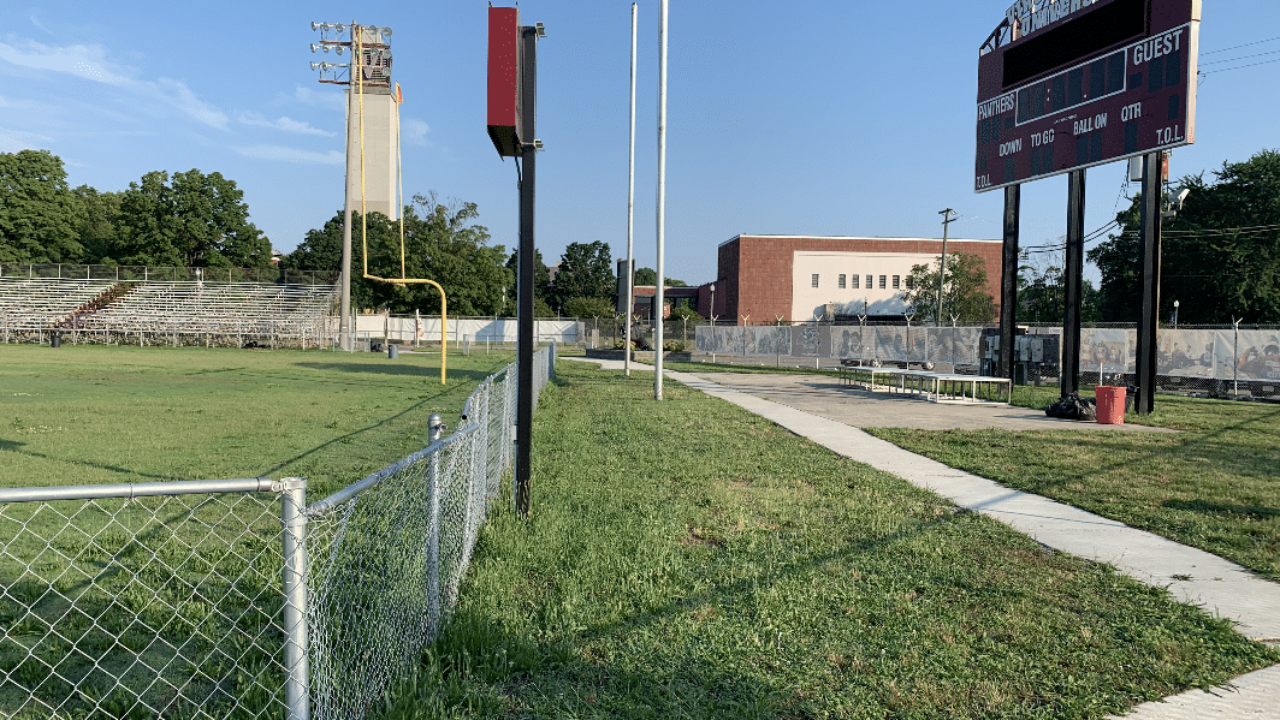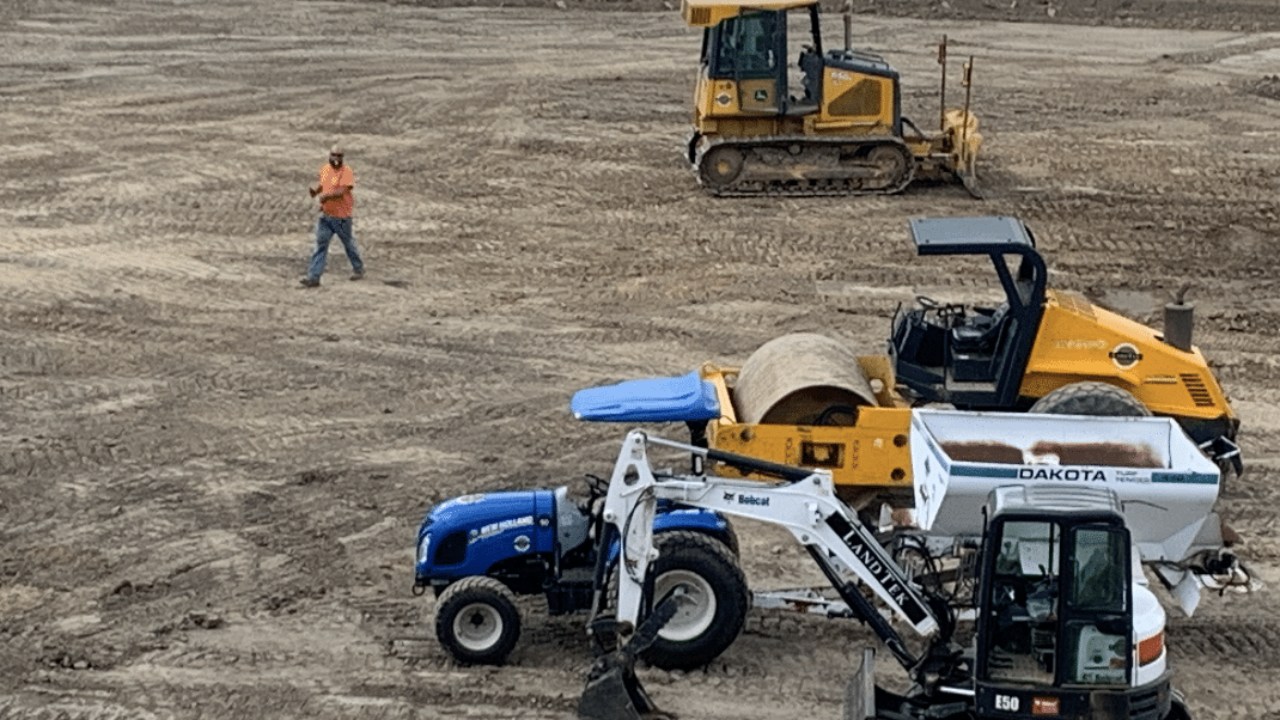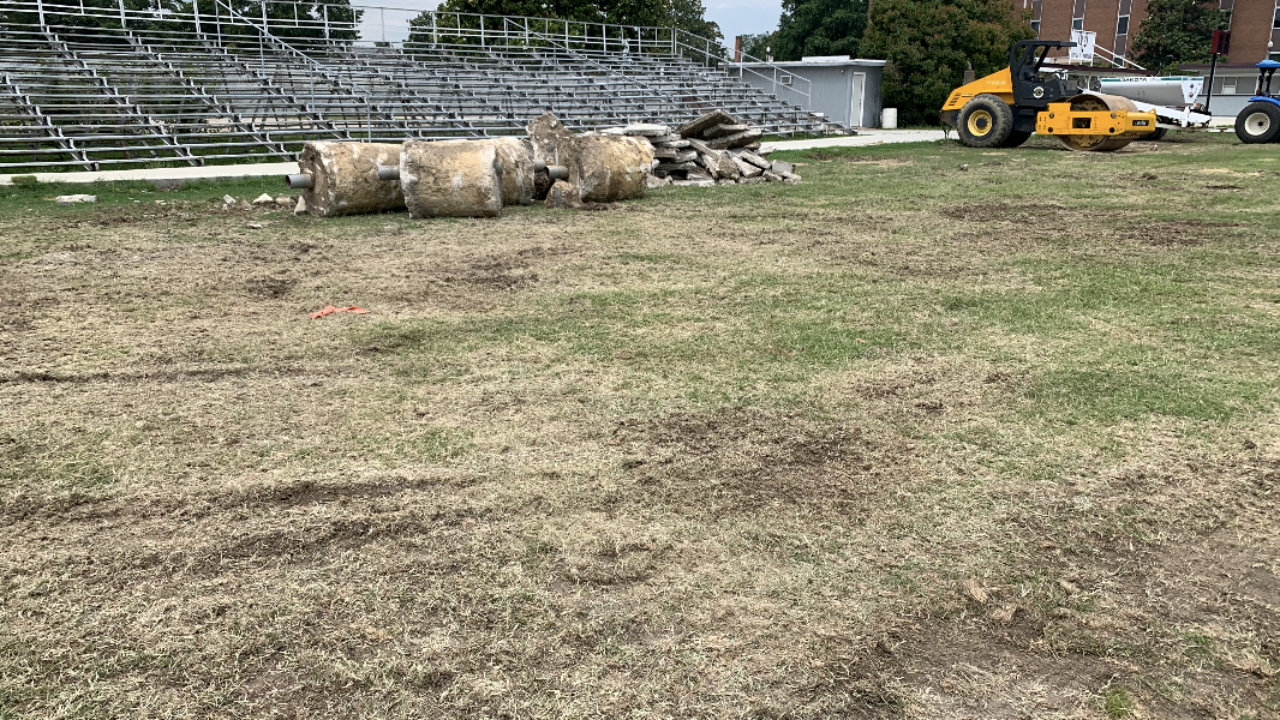The LandTek Group has been at Virginia Union University’s historic Hovey Field breaking ground to install a new synthetic turf field.
Hovey Field’s soil has been home to the Panthers since 1909, but that is on its way out to make way for an artificial surface that’s expected to be ready for the upcoming season. Construction started at Hovey Field on June 22 by The LandTek Group, according to Joe Taylor, VUU’s former football coach and current vice president for intercollegiate athletics.
Hovey Field is the second-oldest college football field in continuous use in the U.S., according to the Division II school. The oldest is Harvard Stadium, which opened on 1903. The grass at Harvard Stadium was replaced by an artificial surface in 2006, meaning Hovey Field was the oldest grass college field in continuous use.
The new artificial playing surface is taking the name of Willie Lanier, the Pro Football Hall of Famer from Richmond. Lanier, who attended Maggie Walker High School (Class of 1963) just down Lombardy Street from VUU, went on to star at Morgan State University in Baltimore.
Matt Ward, a senior project manager for The LandTek Group, the New York-based, self-general contractor that specializes in sports facility design and construction, said Monday that it will take about three weeks to prepare the field for the next phase, which is installation of a drainage system and a field foundation. That also takes about three weeks. And then, the turf can be installed.
“The complications are, with this field that’s been around for [111 years], there is stuff that’s been put in the ground and nobody really knows what’s there,” Ward said. “So far, we really haven’t experienced any [major] problems.”
The construction crew has encountered electrical lines, water lines, irrigation lines, and various drainage systems, according to Ward. VUU is selling grass squares from Hovey Field for $24.99.
The Panthers are scheduled to play their first four football games on the road, and then open at home against Shaw on Oct. 3.
Lanier starred at middle linebacker for the Kansas City Chiefs from 1967 to 1977, and Lanier’s Maggie Walker teams played home games at Hovey Field, which has a capacity of 10,000.
Taylor said he approached Lanier about the field project, believing that Lanier was the right person to honor because “it will force generations to come to be inspired by, ‘Who is this guy?’ Once they go and read about him, it’s got to be inspiring for generations to come.
“His story needs to be told, a young man here from Richmond and one of the best to ever play the game.”
Lanier, 74 and a Richmond area resident, received only one scholarship offer coming out of Maggie Walker, and that invitation was extended by Virginia State. Lanier, looking toward a business major, chose to enroll at Morgan State as a nonscholarship student-athlete and quickly became a football star.
Lanier remains a very strong supporter of historically black colleges and universities.
Lanier returned to Richmond after his NFL career and became a successful businessman and community leader. An award, sponsored by the Richmond Times-Dispatch, is named for Lanier and annually given to the top non-Division I football player in the state. The award is presented at Touchdown Club of Richmond banquet.
The Willie Lanier Field-Hovey Stadium project will be financed through grants, donations and other sources, according to Taylor.
Hovey Field, originally Hovey Park, was named after George Rice Hovey, a former VUU professor and president who helped raise funds to spearhead its creation, according to the school. Hovey died in 1943.
Keep checking back to our website for in progress photos of the project!

